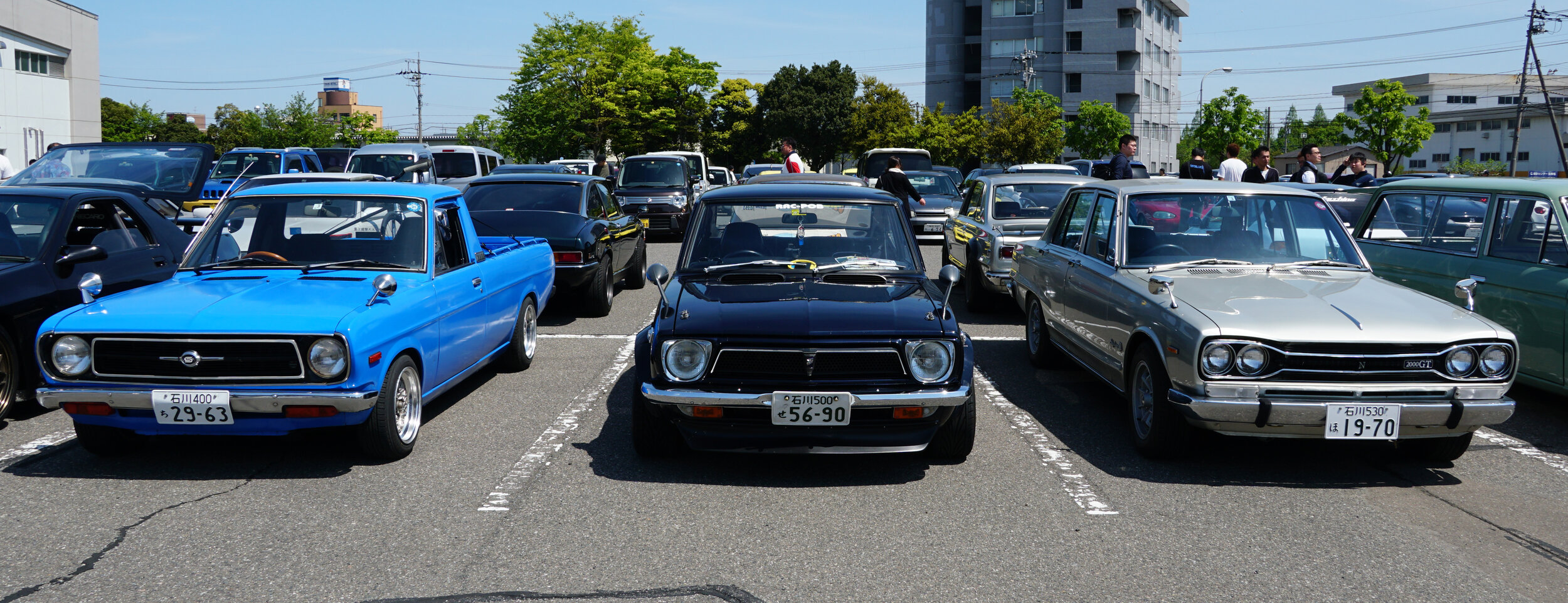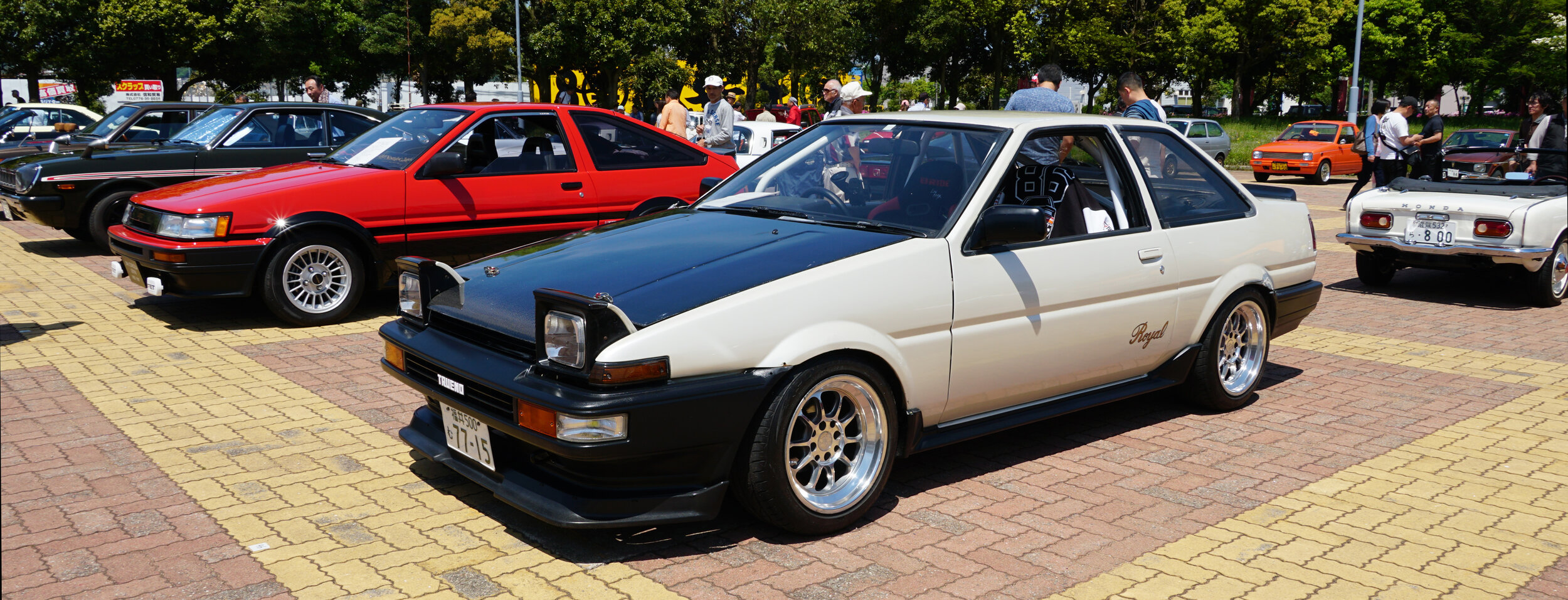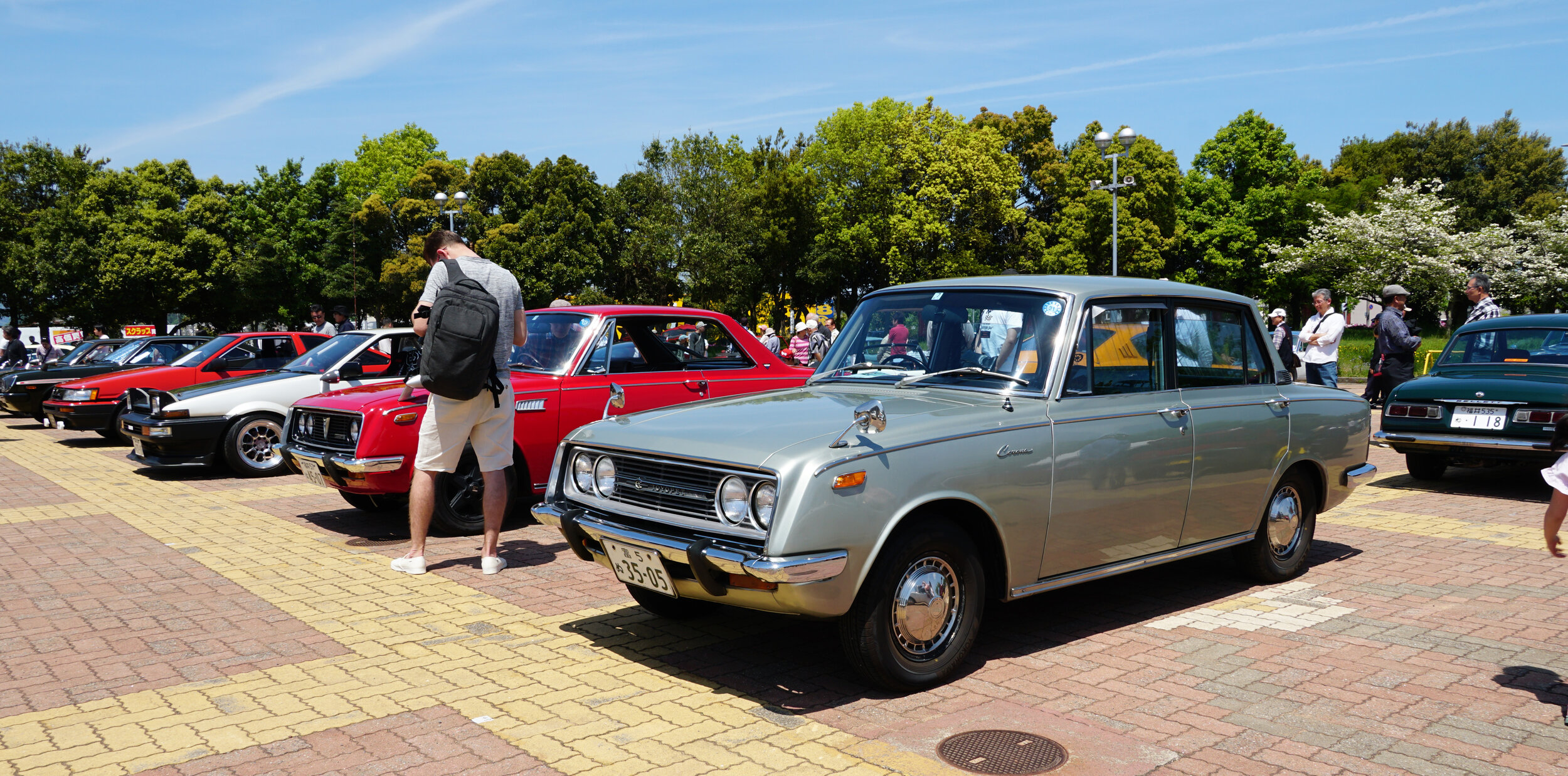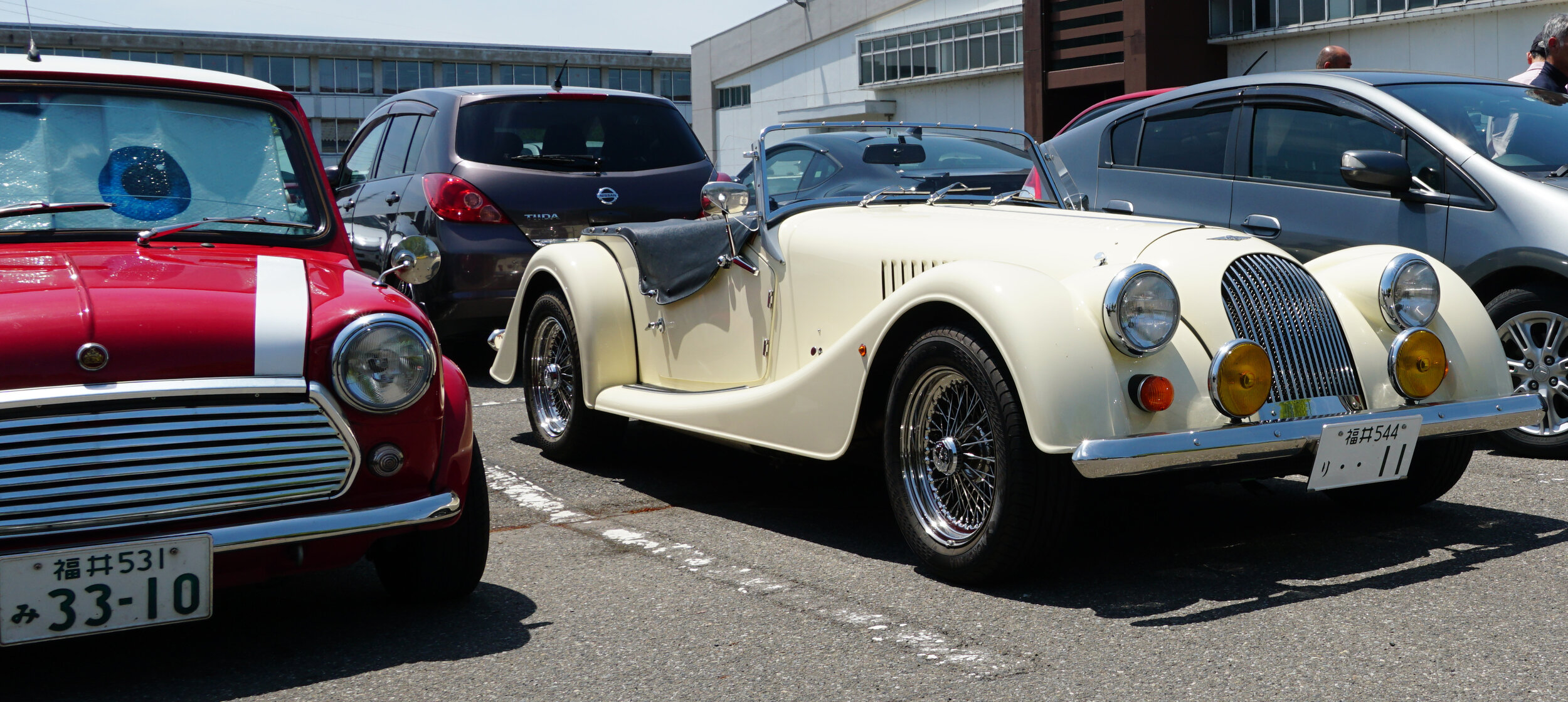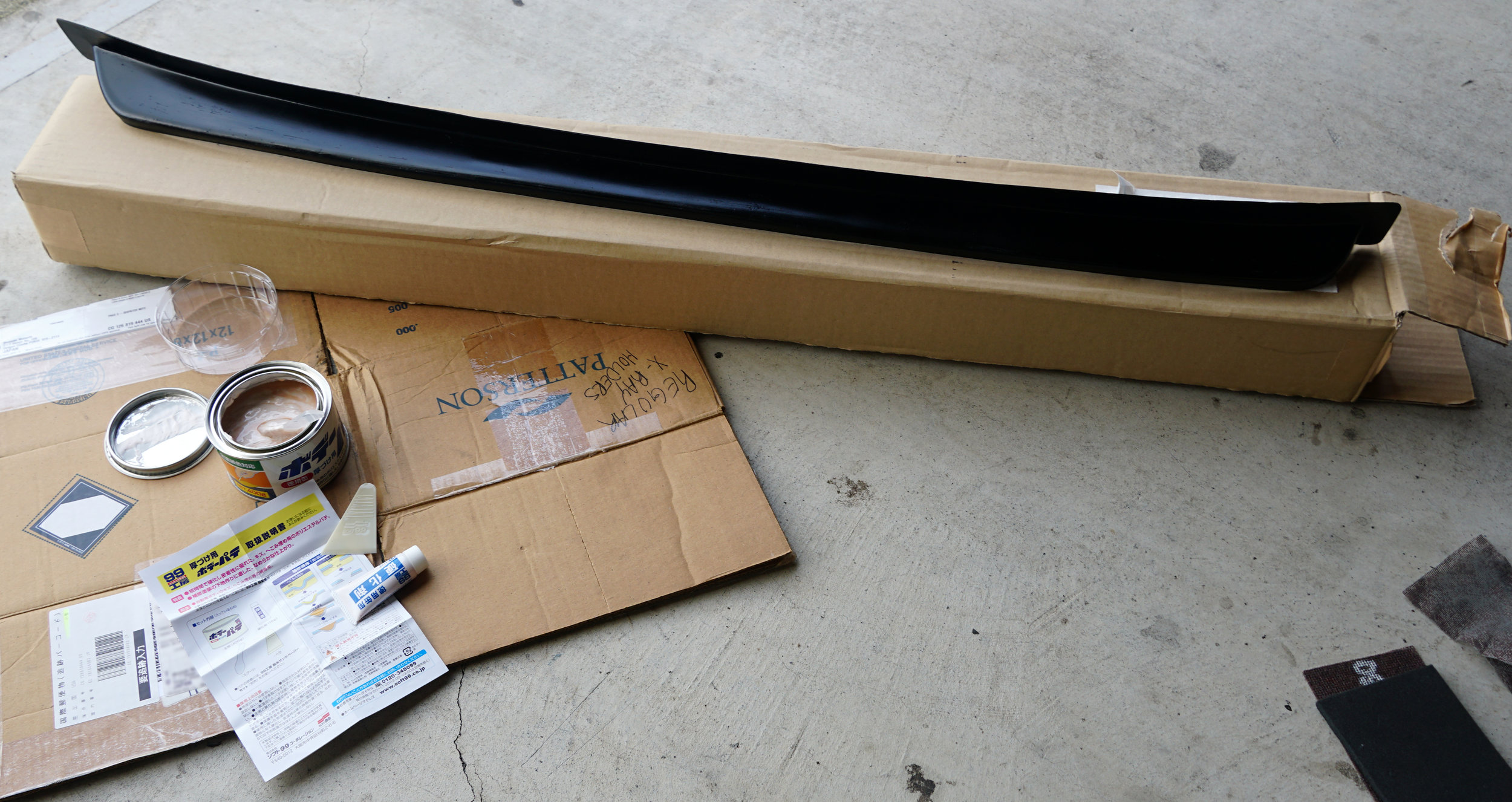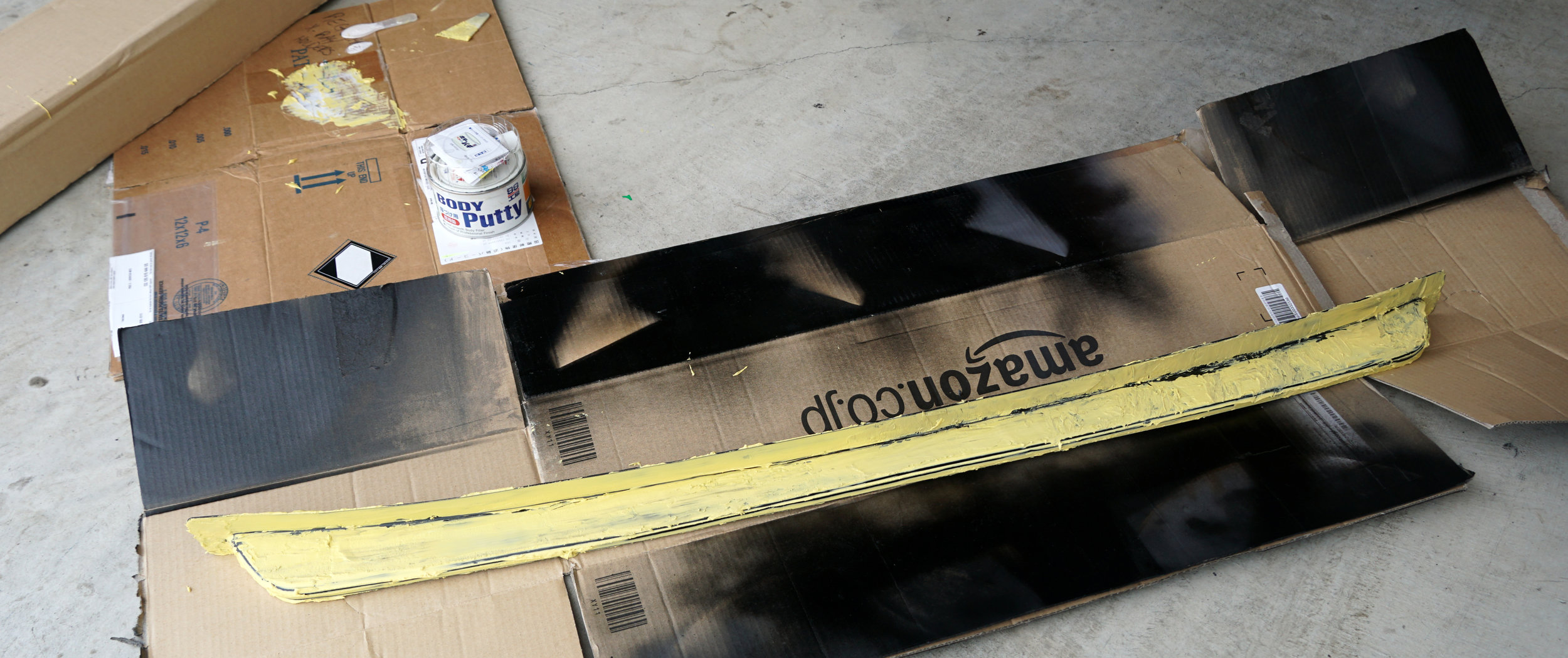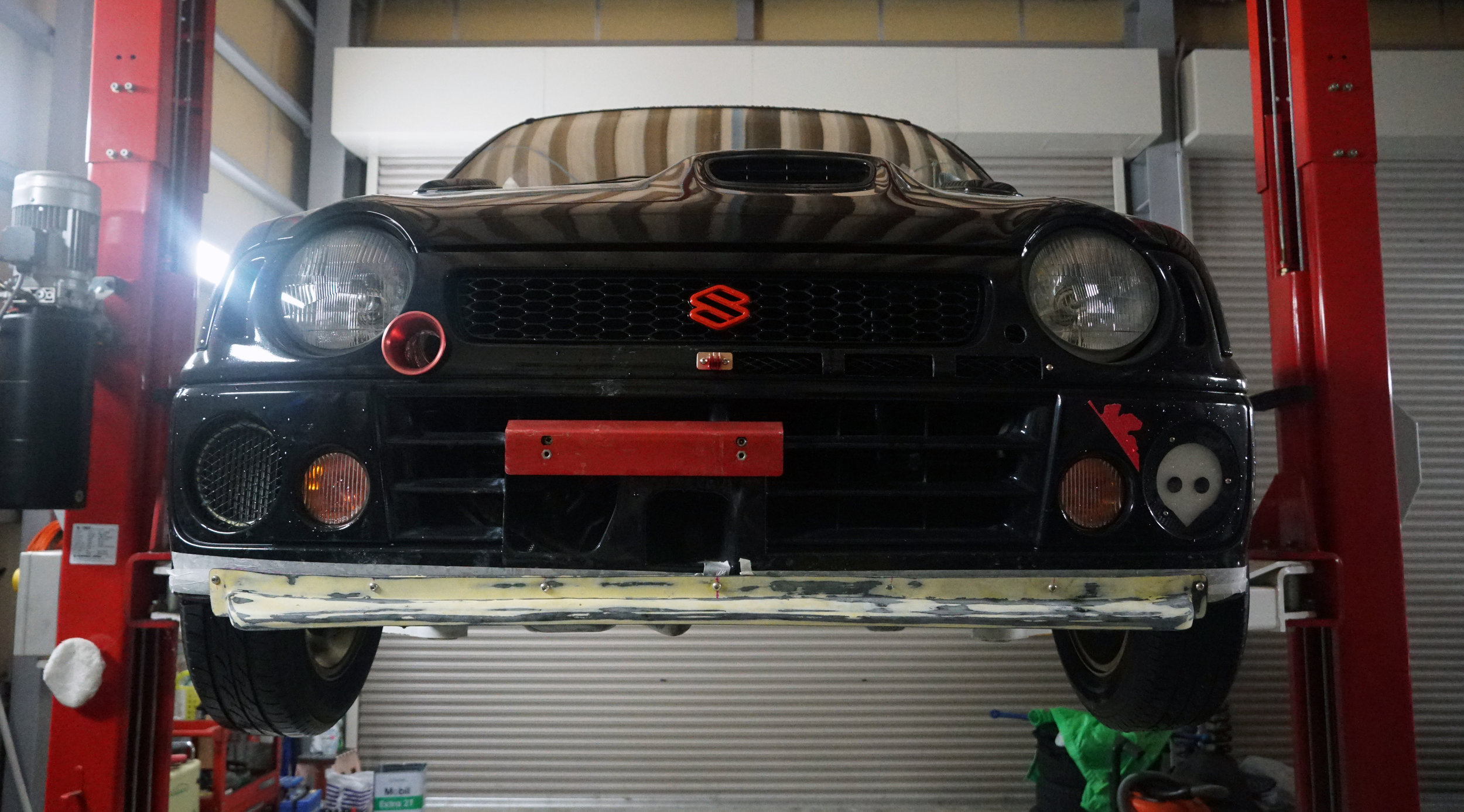[ Alto Works ] Japan Dry ABC Powder Fire Extinguisher, Part 2
Now that we have our Japan Dry Chemical PAN-3AG fire extinguisher, how do we keep it in the car safely? It can’t roll around under the seats and can’t be secured with velcro or the like… at least safely. The last thing I need is a 3kg projectile inside the cabin if I get into an accident. Not to mention many race sanctioning bodies, at least in the US, require a securely mounted metal bracket with bolts and nuts.
The most typical mounting option is in the footwell in front of the driver or passenger seats, bolted to the floor or the seat mounts. As mentioned previously <l>, the fire extinguisher needs to be accessible when I am tightly buckled into my seat. I initially liked the idea of a footwell-mounted extinguisher, as it is quick and easy to access, but given that this is a tiny kei car, legroom is already at a premium.
On race cars, mounting to a roll cage, such as on a harness bar, is another common solution. One would only need to reach around and grab the extinguisher. Unfortunately, there is no harness bar and the other bars are far too inconveniently out of reach.
This leaves only the rear passenger footwell to mount an extinguisher and I think it’s still a pretty good location. I can easily reach back around with my left arm, flick open the metal band, and grab it should I need it. Most importantly, the rear seats cannot be currently used with my roll bar, so there will not be any rear passengers.
Mounting it will be another matter entirely. The transmission tunnel is rather slim, so it is not wide enough to accommodate both bolts drilled through. The second bolt will have to be mounted by an extended stainless metal plate.
This is my mockup shot. As you can see, only one bolt can be mounted directly. With the extra bracket, it seems fairly secure. The only issue is I had to ensure that the two bolts clear the rear parking brake wires. Since this is not an AWD car, there is no rear transmission shaft.
A simple two holes drilled through the tunnel, deburred, and painted, the mount is ready to go on. I cut a bit of the carpet to allow the screws and bracket to clear the dampening foam underneath. With some stainless screws and silicon to seal out the water, the fire extinguisher is mounted!
A simple and quick project, one well-worth the addition if the need ever arises!











